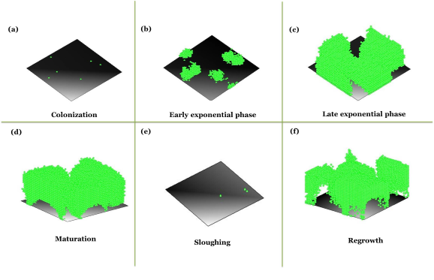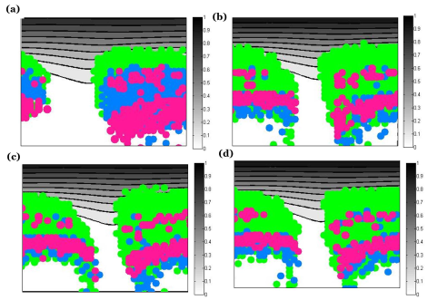 | Chemical Engineering
| Chemical Engineering
“As bacteria band together to form biofilm communities, the threat of antibiotic resistance poses a formidable threat to the efficacy of our medical interventions.”
We develop computational frameworks to investigate biophysical responses of multispecies bacterial biofilms to environmental stresses, particularly antimicrobial agents and nutrient starvation.
1.Biofilms offer protection against environmental stresses and immune responses. Their high antibiotic resistance poses treatment challenges. Our research aims to uncover the biophysical mechanisms behind this resistance.
2.Heterogeneous architecture: The inherent heterogeneity of biofilms, characterized by the presence of distinct microcolonies, plays a pivotal role in eliciting diverse responses to treatment modalities. Our research aims to investigate antibiotic resistance and the emergence of safeguarded microcolonies within developing biofilms.
3.Polymicrobial biofilms: A vast majority of infections involve polymicrobial biofilms. We focus on delineating synergistic and antagonistic interspecies-interactions within these biofilms in the context of nutrient competition, quorum-sensing, and phenotypic switching.


1. Chirathanamettu, T.R., and Pawar P.D. "Quorum sensing-induced phenotypic switching as a regulatory nutritional stress response in a competitive two-species biofilm: An individual-based cellular automata model." Journal of biosciences 45 (2020): 1-16
2. Machineni, L., and Pawar P.D. "Role of Biofilms in Bioprocesses: A Framework for Multidimensional IBM Modelling of Heterogeneous Biofilms." Horizons in Bioprocess Engineering (2019): 93-112.
3. Machineni, L., et al. "A 3D individual‐based model to investigate spatially heterogeneous response of biofilms to antimicrobial agents." Math. Methods in the Appl. Sci. 41.18 (2018): 8571-8588.